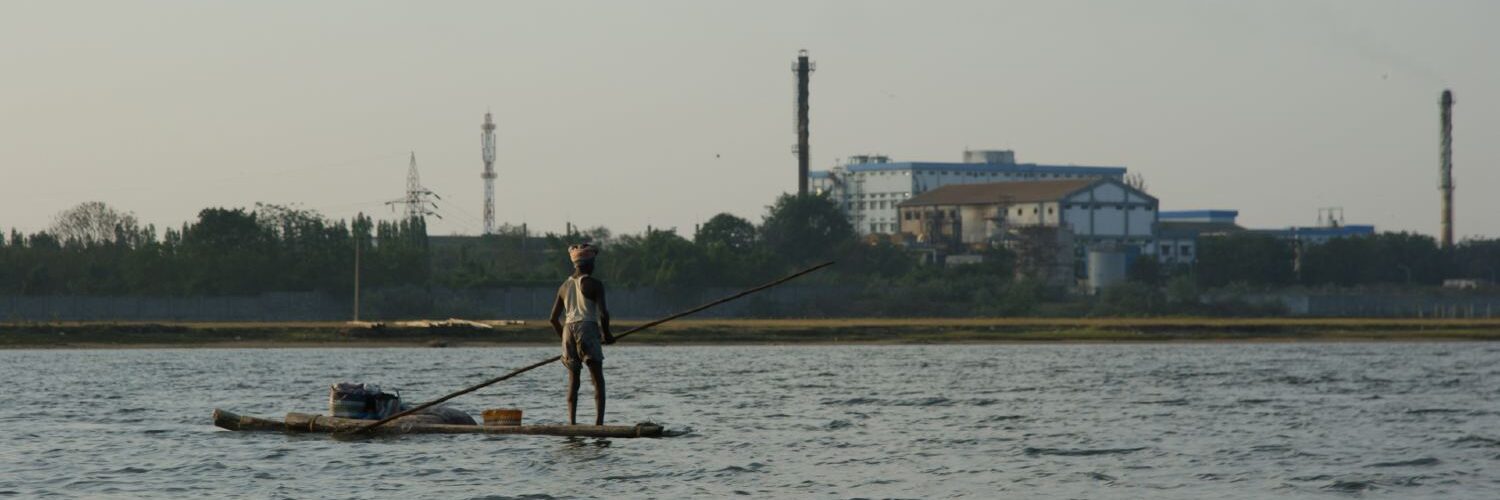Press Release
Sept 17, 2004
New Report: SIPCOT, Cuddalore, A Global Toxic Hotspot for Air Pollution
Toxic Air Monitoring a First for India – Using Community Monitors, Simple Buckets
CUDDALORE, 17 September, 2004 — Samples of air that SIPCOT residents breathe were found to contain extremely high levels of at least 22 toxic chemicals, including 8 cancer-causing chemicals, according to a first of a kind report released by SIPCOT Area Community Environmental Monitors. Based on the results, the group has declared SIPCOT, Cuddalore a “Global Toxic Hotspot.” For the first time in India, the air that people living near industries breathe has been tested for toxic gases, such as Volatile Organic Compounds (VOCs) and sulphur compounds. The results of five samples taken outside Shasun, Tagros, CUSECS 5 and Asian Paints confirm the worst fears of the villagers that the frequent odour incidents they experience are indicators of chemical pollution from the factories. At least 13 chemicals found are used as raw material in SIPCOT industries.
The report justifies the SIPCOT villagers demands for continuous air monitoring, including for toxic gases, an aggressive air pollution elimination program, long-term health monitoring, specialised health care facilities for SIPCOT residents, and a ban on the setting up or expansion of any polluting facility in SIPCOT.
The report titled “Gas Trouble: Air Quality in SIPCOT, Cuddalore” was compiled using samples taken by Community Environmental Monitors from Semmankuppam, Sangolikuppam and Eachangadu villages. The monitors are specially trained in the use of the “Bucket” to take air samples, and in monitoring, reporting and acting on pollution or occupational injury incidents. The training in “Bucket” technology was conducted in March 2004 by Denny Larson of Global Community Monitor. Larson is one of the key persons involved in developing and testing the bucket.
“The Bucket results confirm that SIPCOT is a slow-motion Bhopal. For years, the Pollution Control Board and the Tamilnadu Government have ignored our complaints about nasty odours and our health problems,” said S. Ramanathan, a Community Environmental Monitor from Semmankuppam village. “If the Government fails to do anything even after finding out that the air we breathe has chemicals like benzene, carbon tetrachloride and chloroform, they will be telling the world that they don’t care if we live or die as long as the industries can operate profitably.”
At least 14 of the 22 chemicals, including trichloroethene, carbon tetrachloride, acrolein, methylene chloride and hydrogen sulphide, violate the US Environmental Protection Agency’s safety levels. 1,2-dichloroethane, a cancer-causing chemical that was found in an air sample taken downwind of Tagros Chemicals, exceeded safety levels by a factor of 22,973. Levels of hydrogen sulphide, a gas that smells of rotten eggs, in the air sample taken downwind of CUSECS Pump House No. 5 was 874 times the US EPA safety level.
“I have worked nine years with the bucket and seen at least 500 results from different places around the world. SIPCOT, Cuddalore has to be the worst place to breathe, and certainly the worst that I have seen in terms of the kinds and levels of toxic gases in the air,” said Larson. “The levels of some of the chemicals are at least 1000 times higher than what we saw in other developing countries like South Africa, Thailand and the Philippines.”
Despite the magnitude of the problem, not a single health study has been conducted till date in SIPCOT, Cuddalore. The Pollution Control Board does not monitor for toxic gases in the industrial estate, and what basic data it has on air pollution has never been released to public.
The findings of the report have very troubling implications particularly for women, children and old people who spend all their time within the polluted confines of SIPCOT.
“Children, foetuses and pregnant women are most at risk of exposure. These chemicals can attack children at a very vulnerable stage of development and may, in cases, permanently damage their ability to fight diseases or their mental, physical and sexual development,” said Shweta Narayan, coordinator of the Community Environmental Monitoring program.
Despite the demonstrated lack of capacity of the Pollution Control Board or the Health Department to understand the pollution problem and take action to protect public health, the Government is adding to the pollution load in SIPCOT by allowing more polluting units to come up.
Villagers from Semmankuppam and Sangolikuppam are very unhappy about the setting up of a new company, Pandian Chemicals, in SIPCOT Phase II. The company plans to manufacture 38 tonnes/month of Ammonium Perchlorate, a highly explosive chemical used in rocket fuel. The chemical is a problematic groundwater contaminant that is dangerous even at low levels to foetuses, young children and pregnant women. It can be passed on from mother to child through breast milk, and is known to attack the brain development of the child.
“The people don’t want Pandian Chemicals; the Panchayat doesn’t want it. The company manufactures a deadly explosive, and a chemical that is known to affect children’s health. If the Government cares for people, the project should be dropped. Only clean industries that can provide safe jobs to villagers should be allowed in SIPCOT,” said M. Nizamudeen of FEDCOT.
SIPCOT Area Community Environmental Monitoring is a project of FEDCOT, Cuddalore District Consumer Organisation, Global Community Monitor and The Other Media.
